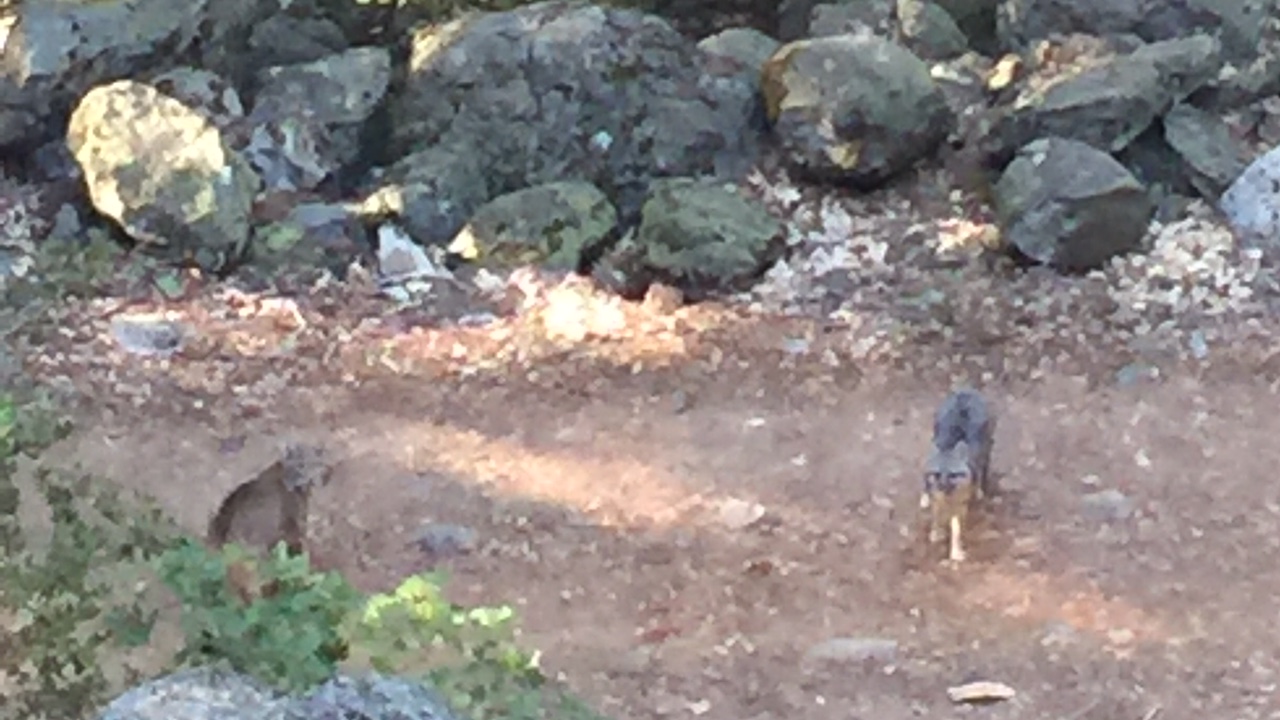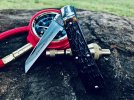- Joined
- May 13, 2019
- Messages
- 8,199
Don't we all !!!When I carry this knife I often find myself pulling it from my pocket just to look at it.
View attachment 1167971
The BladeForums.com 2024 Traditional Knife is available! Price is $250 ea (shipped within CONUS).
Order here: https://www.bladeforums.com/help/2024-traditional/
Don't we all !!!When I carry this knife I often find myself pulling it from my pocket just to look at it.
View attachment 1167971
It is a beauty.When I carry this knife I often find myself pulling it from my pocket just to look at it.
View attachment 1167971
And that's what happens when you have a lamb in your pocket...Good (late) Morning Guardians... I'm back!
I had a great trip to the mountains with the family. No wifi, no cell service, no electricity, just a bunch of fishing, talking, and playing.
The only knife I toted...
Caught a whole bunch of these little guys.
Even had some entertainment... Fox vs Bobcat this morning.
Sorry the picture is blurry, it was a little too far for my phone camera. But at least you can kinda see 'em...

I totally agree Kevin.I think our illustrious enablerJack Black deserves a year or two off.
Thank you sir.Another fine photo, Dwight.
Mellow... I'm sipping 40 Creek Copper Pot even as I type.Yesterday's sharpening session with Betty.


They must have smelled fresh Lamb.And that's what happens when you have a lamb in your pocket...Your lucky you spotted em in time.

Cool picture... Tire deflator?
Yeah, that lambsfoot will deflate a tire real quick!Cool picture... Tire deflator?
Thanks John. Yep it's a deflator, but, as Vince said, the lambsfoot is quicker.Cool picture... Tire deflator?
Yeah, that lambsfoot will deflate a tire real quick!
Yeah, that lambsfoot will deflate a tire real quick!
Thanks John. Yep it's a deflator, but, as Vince said, the lambsfoot is quicker.
Well done mate. Fantastic article H herder , that is one of the great things about the forum, the research that members are prepared to do. You have a good weekend.One question that has been brought up a few times in the past is "Were there any vintage American made Lambfoot knives?"
I would say yes...
We can all agree on the general tapered shape of a Lambfoot blade, and it appears that they first came about in the late 1800s in England.
This is a very unique blade shape that doesn't seem to appear anywhere else in Europe in the late 1800s to early 1900s, but does show up in the United States in the early 20th century.
While the Sheepfoot blade shape is very commonly seen on American knives during the 19th and 20th centuries, the Lambfoot blade shape is nearly unheard of.
But... an advertisement from a 1905 "Washington Cutlery Co." illustration shows two models with the bottom one quite clearly a Lambfoot model even though it is listed as a Sheepfoot model.
The top knife shows a classic Sheepfoot blade, while the bottom knife has a tapered blade and looks overall quite like the new "Waynorth" Lambfoot models.
It shouldn't be any great surprise that a Lambfoot styled knife would show up in early 20th century America since a great many Sheffield cutlers immigrated to the United States in the late 1800s to early 1900s.
I would like to show a second American illustration and knife which at the very least borders on a Lambfoot model. This knife was offered (but not necessarily made by) the "John Russell Cutlery Co." from the late 1800s through the very early 1900s. The handle is made of cast iron with the words "The Boy Of" on the front handle, and "America" on the back side. The illustration shows a tapered blade but it is just slightly more "squared off" than the "Hartshead" models. Still, quite similar. Also shown is an actual example of the knife. The blade does not look as tapered as the illustration, but it is when measured from back to tip.
So, were there any old Lambfoot knives made in America, I think so, but certainly on the rare side.
View attachment 1168180
View attachment 1168182
View attachment 1168181



Being from Tennessee and a lover of the Lambsfoot, let me just say this, you have good taste my friend!Yesterday's sharpening session with Betty.


I hope you have a great trip David!Well I'm packing my bags for a weekend away in the wilds of northern England so as always my rosewood comes along on my outdoor trips. Great shots everyone and hope you all have a great weekend.

Enjoy your weekend Jack!Morning Guardians, I'm afraid that my house guest is keeping me rather busy, but I just wanted to call in, and hope to be back here with you soon. Have a good Friday



I can understand why - gorgeous piece.When I carry this knife I often find myself pulling it from my pocket just to look at it.
View attachment 1167971


Dwight, Dutch has used that term and a few others that can't be repeated hereI'm gonna start calling you Drill Sargent Preston!
Thank you Preston. Lovely outdoorsy image of your Lambsfoot.
I often rely on stream of consciousness when making images. This is glitter paste that my wife uses to highlight her hair and eyes.
Jack Black - Thank you Jack. I hear the the Uk is going through a warm spell. Stay cool. That chip buttie looks yummy, especially with your HH Barlow. Great portrait of Chin.
Half/Stop Thank you Ron. Love your Ebony - red, white, and blue image.
Good Morning Guardians.
That's one of them Eastern Greens...mighty fine eating, but hard to get in range for a good shot>I looked at that without my specs on and for a second thought "crikey! Look at the size of that grasshopper!!"My next thought was then "thank God Preston has all that firepower"
Then I put my specs on.
Both the dish and the knife look scrumptiousI totally agree, the Lambsfoot makes for great work knives for that very reason.
No guacamole, not recently anyway. I have just been adding them to things, like this beans and rice bowl.
Have a great weekend, David.

There is beans and rice under all that stuff, I swear.

One question that has been brought up a few times in the past is "Were there any vintage American made Lambfoot knives?"
I would say yes...
We can all agree on the general tapered shape of a Lambfoot blade, and it appears that they first came about in the late 1800s in England.
This is a very unique blade shape that doesn't seem to appear anywhere else in Europe in the late 1800s to early 1900s, but does show up in the United States in the early 20th century.
While the Sheepfoot blade shape is very commonly seen on American knives during the 19th and 20th centuries, the Lambfoot blade shape is nearly unheard of.
But... an advertisement from a 1905 "Washington Cutlery Co." illustration shows two models with the bottom one quite clearly a Lambfoot model even though it is listed as a Sheepfoot model.
The top knife shows a classic Sheepfoot blade, while the bottom knife has a tapered blade and looks overall quite like the new "Waynorth" Lambfoot models.
It shouldn't be any great surprise that a Lambfoot styled knife would show up in early 20th century America since a great many Sheffield cutlers immigrated to the United States in the late 1800s to early 1900s.
I would like to show a second American illustration and knife which at the very least borders on a Lambfoot model. This knife was offered (but not necessarily made by) the "John Russell Cutlery Co." from the late 1800s through the very early 1900s. The handle is made of cast iron with the words "The Boy Of" on the front handle, and "America" on the back side. The illustration shows a tapered blade but it is just slightly more "squared off" than the "Hartshead" models. Still, quite similar. Also shown is an actual example of the knife. The blade does not look as tapered as the illustration, but it is when measured from back to tip.
So, were there any old Lambfoot knives made in America, I think so, but certainly on the rare side.
View attachment 1168180
View attachment 1168182
View attachment 1168181
